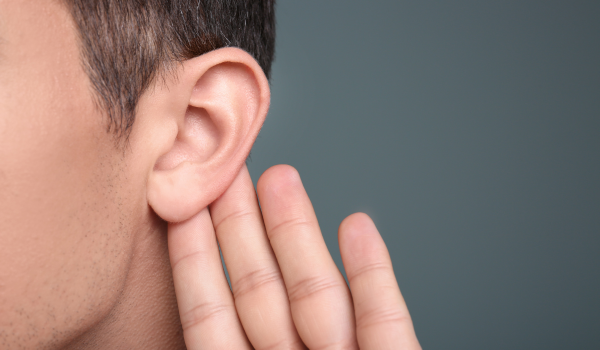
Hearing is a complex sense that can be affected in many ways. When it begins to decline, you may hear terms like "hearing loss" and "deafness" used interchangeably. But while they are related, they do not mean the same thing.
This article will help you understand the key differences between hearing loss and deafness, including how each is defined, measured, and managed. You’ll also learn at what point hearing loss becomes classified as complete deafness.
Understanding Hearing Loss
Hearing loss refers to a reduction in the ability to hear sounds. It can range from mild to profound and can affect one or both ears.
Key characteristics of hearing loss:
-
Gradual or sudden
-
May affect certain frequencies more than others
-
Doesn’t always mean a person is completely unable to hear
Common causes:
-
Aging (presbycusis)
-
Noise exposure
-
Infections
-
Genetics
-
Ototoxic medications
Most people with hearing loss still retain some auditory function and can benefit from treatment, especially when identified early.
Defining Deafness
Deafness is the most severe form of hearing loss. It usually refers to a condition where a person cannot hear sounds well enough to understand speech—even with the use of hearing aids.
Key traits of deafness:
-
Often permanent
-
May occur at birth or later in life
-
Affects both hearing and spoken communication
Total or profound deafness means that hearing thresholds are so high (91 dB or more) that most sounds—including speech—are inaudible.
Some people with deafness may identify as part of the Deaf community, embracing sign language and Deaf culture as part of their identity.
Degrees of Hearing Loss
Hearing ability is typically measured in decibels (dB) using an audiogram. This helps audiologists classify the degree of loss.
| Degree | Hearing Range | Description |
| Normal | -10 to 20 dB | No hearing loss |
| Mild | 21 to 40 dB | Trouble with soft sounds |
| Moderate | 41 to 55 dB | Difficulty hearing regular speech |
| Moderately Severe | 56 to 70 dB | Struggles with conversations |
| Severe | 71 to 90 dB | Cannot hear most conversations |
| Profound | 91+ dB | May hear only very loud sounds |
Deafness typically refers to people in the severe to profound range, especially those who rely on visual communication over auditory methods.
Types of Hearing Loss
Hearing loss can be classified into three primary types, all of which may lead to deafness if severe enough.
1. Conductive hearing loss:
Caused by problems in the outer or middle ear, such as wax buildup, fluid, or infections.
2. Sensorineural hearing loss:
Caused by damage to the inner ear or auditory nerve. This is usually permanent and common in aging.
3. Mixed hearing loss:
A combination of conductive and sensorineural issues.
Deafness is most often associated with sensorineural or mixed hearing loss in the profound range.
Symptoms That Set Them Apart
The early symptoms of hearing loss are subtle. Deafness, however, presents more dramatically.
Common signs of hearing loss:
-
Asking others to repeat themselves
-
Struggling in noisy environments
-
Turning the TV volume higher
-
Missing high-pitched sounds
Indicators of deafness:
-
Inability to hear speech sounds
-
Relying on lip-reading or sign language
-
Hearing aids offer little to no benefit
-
Speech development delays (in children)
The transition from hearing loss to deafness is gradual in some, while in others (due to injury or infection), it can happen suddenly.
When Hearing Loss Becomes Deafness
So, when does hearing loss become deafness?
The critical point lies in function, not just decibels.
-
A person may be considered legally deaf if their better ear has a hearing threshold of 70–90 dB or greater, even with hearing aids.
-
If hearing aids don’t restore functional hearing, the person is considered deaf.
-
In many cases, cochlear implants or visual communication methods (like ASL) become necessary.
In children, early diagnosis and intervention are crucial, especially if the hearing loss affects language development.
Communication Methods
How individuals communicate often distinguishes hearing loss from deafness.
People with hearing loss may still:
-
Use spoken language
-
Benefit from hearing aids
-
Function well with amplified devices
People with deafness may:
-
Use sign language
-
Prefer visual alerts over audio alarms
-
Be part of the Deaf community, which views deafness not as a disability but as a cultural identity
Assistive Technologies
Technology can help individuals with hearing impairments live more independently, regardless of degree.
For hearing loss:
-
Hearing aids
-
FM systems
-
Personal amplifiers
For deafness:
-
Cochlear implants (for some)
-
Video relay services
-
Captioning tools
-
Vibrating alert devices
Important: Not everyone with profound hearing loss benefits from cochlear implants. Personal preferences and outcomes vary widely.
Emotional and Social Impact
Whether mild or profound, hearing issues can take a toll on mental health.
Effects of untreated hearing loss:
-
Social withdrawal
-
Depression or anxiety
-
Communication struggles at work and home
Deaf individuals, especially those unsupported or isolated, may experience:
-
Educational disadvantages
-
Employment challenges
-
Discrimination
However, with early intervention, community support, and access to resources, people with all degrees of hearing impairment can lead fulfilling lives.
Diagnosis and Assessment
A complete diagnosis includes:
-
Pure-tone audiometry
-
Speech recognition testing
-
Tympanometry
-
Otoacoustic emissions (OAE)
Your audiologist will help determine whether your condition is best described as hearing loss or deafness, and recommend the right path forward.
Hearing Identity and Culture
Some people who are medically “deaf” may not identify as such, while others fully embrace the Deaf identity regardless of residual hearing.
Important distinctions:
-
“deaf” (lowercase): Refers to the medical condition
-
“Deaf” (capital D): Refers to Deaf culture and community
Deaf culture includes:
-
American Sign Language (ASL)
-
Shared social norms and history
-
A strong emphasis on visual communication
Note: Not all people with hearing loss wish to be part of Deaf culture, and that's okay. It's a personal choice based on experience and identity.
Final Thoughts
The terms hearing loss and deafness may sound similar, but they describe different experiences. Hearing loss exists on a spectrum—from mild inconvenience to profound impairment. Deafness, on the other hand, represents the complete or near-complete inability to hear, often requiring alternative forms of communication.
Whether you are experiencing mild changes in hearing or facing profound deafness, the key is early detection, proper support, and community understanding.

.png)
.png)
.png)
.png)
.png)


